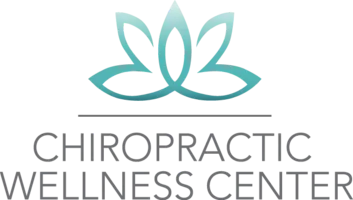How to Use Red Light Therapy for Cellulite
Cellulite, those stubborn dimpled fat deposits on the thighs and midsection, are entirely normal — but it’s also okay if you’re a little self-conscious about its appearance. If you’ve tried all the creams and topical treatments without seeing the results you want, it may be time to find something with a little more *oomph*.
A non-invasive way to treat cellulite you may have come across is red light therapy. This light-based treatment has been used by dermatologists and skincare professionals for various skin conditions, from wrinkles to acne, but it can also reduce the appearance of cellulite. But how does red light therapy do this? Keep reading to find out! What is Cellulite?
Cellulite appears on the thighs, hips, buttocks, and stomach as small pockets of fat deposits under the skin that can give the area a dimpled appearance similar to that of citrus skin.
Cellulite is a harmless condition
https://www.mayoclinic.org/diseases-conditions/cellulite/symptoms-causes/syc-20354945 that is not an indicator of your overall health. Some people are more likely to develop cellulite based on their genetics, or it can be influenced by diet and exercise. It’s important to note that cellulite can develop on any body shape https://www.theralight.com/how-to-use-red-light-therapy-for-weight-loss/, and even models, actors, and athletes have cellulite.
However, cellulite can impact someone’s confidence in their body. If the cellulite on your body prevents you from being confident in the clothes you want to wear or activities you want to do, there are safe, effective ways to reduce the appearance of cellulite. Red Light Therapy for Cellulite
Red light therapy is used to treat various skin conditions, and it’s shown to have some benefits for cellulite. Red light therapy increases fibroblast development, which boosts collagen production https://www.theralight.com/what-is-collagen/ and firms the skin in the area being treated — reducing the appearance of cellulite.
PBMT Light Therapy & Soft Tissue Healing
When our bodies experience tissue damage through injury, illness, or other environmental factors, a healing process happens at the microscopic level. In this article, learn more about this process, including the different stages of tissue healing and how red light therapy (RLT) can supplement the healing process to speed it up and reduce pain.
What Happens During the Body’s Healing Process?
The healing process comprises regeneration and repair https://www.physio-pedia.com/Soft_Tissue_Healing components. It includes four phases, which are as follows: Step One: Hemostasis
During this survival stage, your body releases signals that tell your blood to clot and halt active bleeding. Your body makes a platelet and inflammatory cell clump that goes to the injured spot to cause the bleeding to subside. The platelets, which are parts of cells, bind to the injured tissue and support healing. They release substances that help create additional platelet function, which encourages clotting factors that generate a protein mesh to block blood flow at the injury. In addition, the platelets present release growth factor substances to promote healing further. Other cells come, more protein mesh forms, and collagen helps start tissue repair. Step Two: Inflammation
This stage overlaps with the first and, if everything works correctly, should last for just a few days. It activates the complement system, the name for a group of signaling molecules found in the bloodstream. This system manages blood vessels in the area and tells inflammatory cells and white blood cells to come. Blood vessels flow better and encourage healing and cell-building — inflammation results, presenting as swelling, redness, pain, and warmth. The inflammation process helps remove harmful waste materials, promotes healing factors, and supplies components for rebuilding. Step Three: Proliferation
This process involves the building of tissue. The inflammatory phase helped create a foundation for this tissue to form. This process creates new blood vessels, tissue granulation, and skin while reducing the size of the wound. Blood flow brings oxygen, collagen, stem cells, and other substances to help develop smooth skin or needed tissue, such as muscle, tendon, ligament, or bone. Step Four: Remodeling
Remodeling can be a long, ongoing process depending on the situation. The body uses stronger collagen to replace weaker parts, organizes tissue that needs it, and so on. This process remodels and repairs to create a fully and properly healed area.
How Can Red Light Support Healing?
While the body goes through the standard four phases of healing after an injury, various factors can affect the length of time of the healing process. Some factors, such as age, may be out of your control, but you can take action to facilitate healing. For instance, physiotherapy encourages healing. Red light is another way you can support your body’s healing processes.
How does red light help? It promotes increased cellular energy https://www.theralight.com/the-power-of-red-light-in-photobiomodulation-therapy/ by impacting the part of our cells called the mitochondria, which plays a key role in energy synthesis and transportation. The increased cellular energy and temporarily widened blood vessels created through red light therapy help the inflammatory process involved in healing. These effects bring the needed substances to the site faster, so they can start getting rid of waste and work on damaged tissue as soon as possible. RLT also increases collagen production, which is part of the repair process.
Professionals now question the use of ice immediately following an injury because it reduces the inflammation process necessary for healing. Red light therapy provides an alternative to ice https://www.theralight.com/the-problem-with-ice-and-how-red-light-therapy-can-help/ by working with the inflammatory response to promote efficient healing.
Red Light Therapy Sessions
While you can target specific body parts with red light therapy, you can also encourage full-body responses by using a red light therapy bed. Full-body RLT https://www.theralight.com/the-complete-guide-to-photobiomodulation-for-your-whole-body/ helps increase cellular energy and natural healing throughout the whole body. Full-body therapy provides a painless method of healing https://www.theralight.com/the-benefits-of-full-body-photobiomodulation/ that doesn’t require medication, injections, or surgery. Nonetheless, it’s also safe to use with other treatments and therapies for the best results in each situation.
Practitioners should customize red light therapy treatments to each person’s needs. RLT provides some immediate results, yet the results build with each session https://www.theralight.com/how-often-should-you-use-a-red-light-therapy-bed/ to provide ideal improvement after consistent use for about eight to 12 weeks. It’s good to begin with short 10-minute sessions every other day.
Red Light Therapy for Acne
Acne is a mild nuisance for some people and reduces the quality of life in others. The skin condition can be painful, cause long-lasting scarring, and erode the confidence of those with acne. Red light therapy uses the power of light to help promote healing https://www.theralight.com/the-phases-of-tissue-healing-how-red-light-therapy-helps/, reduce inflammation caused by severe cystic acne, relieve pain, improve the appearance of the skin, and reduce scarring.
Acne usually begins in puberty and occurs mainly in adolescents and young adults, but the skin condition can persist into the 30s and 40s. The condition develops when oil and dead skin cells clog the hair follicles beneath the skin’s surface. An overproduction of sebum, the oil that keeps skin supple, contributes to the development of acne.
Symptoms of acne include blackheads, pus-filled pimples, and large, red, tender bumps. While acne isn’t life-threatening, it can cause embarrassment in ways that prevent you from leading your best life possible. In research studies, some people say their acne makes them feel unattractive; others say it makes them feel on edge. Some teens say they feel too self-conscious to participate in sports, jobs, or participate in class. Acne can even affect your emotional health — people with the skin condition often develop anxiety and depression.
Treatment for acne includes over-the-counter creams, cleansers, and antibiotics. Unfortunately, not all acne treatments work for everyone, and there are very few treatments for acne scars and red spots. The good news is that you can get real results from red light therapy for acne. Use Red Light Therapy For Acne
Red light therapy promotes healing from acne. It works deep beneath the surface of your skin to help repair and soothe irritated tissue. Use Red Light Therapy To Get Rid Of Red Spots Caused By Acne
Acne damages the skin in ways that can cause changes to the skin tissue. The trauma of acne can cause temporary darkening of the skin, a condition known as post-inflammatory hyperpigmentation https://www.theralight.com/photobiomodulation-for-post-inflammatory-hyperpigmentation/. Injuries cause inflammation. As this inflammation heals, the skin produces extra melanin, a natural substance that gives your skin, hair, and eyes their color.
Melanin also has protective qualities. It protects your skin from the sun’s harmful UV rays by turning your skin darker, or tanning, to create a protective barrier. Your skin also produces melanin in reaction to irritation and inflammation, both associated with acne.
The extra melanin causes a dark spot to form as the pimple heals. Squeezing, picking, or scratching a pimple can worsen the dark spots.
While the dark spots associated with acne are temporary and usually clear up themselves, they can take 3 to 24 months — or longer — to go away. Repeated trauma, such as picking at the pimple, can cause the hyperpigmentation to last even longer.
Red light therapy for acne stimulates circulation to deliver inflammatory mediators, which are natural substances that control swelling, to the injured skin tissue. The inflammatory mediators prevent the inflammation that triggers the melanin, which means red light therapy stops the dark spots from developing in the first place. Get Rid Of Acne Scars
Scars can develop when the trauma of acne damages your skin’s derma, which is the layer of tissue just below the surface of your skin. Your body produces collagen to help your skin heal from acne. Collagen fibers can help skin heal quickly, but overgrowth and poor distribution of collagen can cause a scar to form.
Red light therapy can also address acne scars by improving the distribution of collagen fibers, thereby preventing the formation of visible scar tissue https://www.theralight.com/10-ways-to-address-scar-tissue/. Laser resurfacing, which also uses the power of light energy, can also remove damaged skin and scar tissue. Combine Red Light Therapy With Other Treatments
Red light therapy for acne can be used with other acne treatments https://www.theralight.com/can-i-combine-red-light-therapy-with-other-treatments/, such as exfoliants that scrub away the dead skin cells contributing to acne. Get The Most Out Of Your Red Light Therapy
Optimize your results from red light therapy for acne https://www.theralight.com/how-to-prepare-your-skin-for-red-light-therapy/ by removing all sunscreen and makeup products from the affected area before your treatment. These products can block the red and near-infrared LED rays used in red light therapy.
As long as sensitivity is not an issue, you can use anti-acne skincare products following your red light therapy. You can use beta hydroxy acids (BHAs), which cut through the sebum and clear out your follicles to reduce pimples and blackheads. Use salicylic acids after red light therapy to exfoliate your skin and clear your pores.

